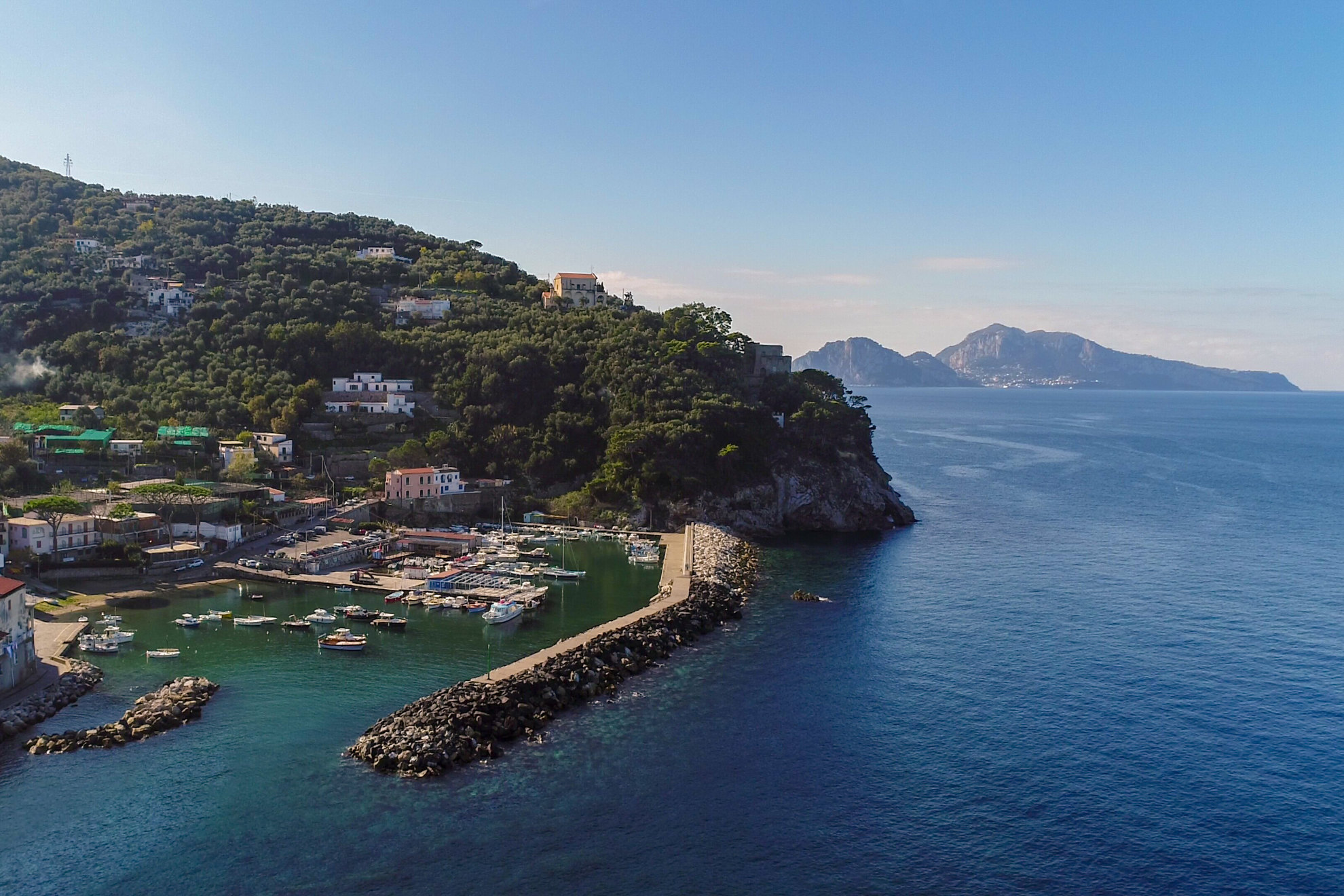It is a little world of its own, the village of Marina della Lobra. The marina, bordered by the cliffs, welcomes a few bathers in the summer, attracted more by the solitude and silence than by the comfort of the shoreline.
The old Toledo tower, one of the many watchtowers in the area, was built in 1277 by Charles of Anjou to defend the local population from Saracen raids. The little houses set one on top of the other, painted white and pink, joined and divided by stairways, descents, climbs, and small green paths. The scent of lemon and olive groves, which are the soul of the villages of the Sorrentine Peninsula.
Ph. Enrico Nocera

The fishermen's boats, worn by time and salt. The large, pointed stones that make the sea transparent, especially in the off-season, despite being harbour water. The Rock of Vervece, barely a kilometre from the port, peeps out of the sea and seems to converse silently with Marina della Lobra.
Indeed, the relationship between the Vervece and the Marina is intense, ancient and shrouded in legend. It is said, in fact, that the women of the village, fearing that the Sorrentines would steal the rock, made a large rope to pull it to shore and save it. But as they tried to pull, the rope snapped, and the women fell backwards onto the ground. Since that day, it is said that all the women of Lobra have flat bottoms.
Ph. Enrico Nocera

This cove that graces the coast in summer is an explosion of life and colour, with a bustle of people coming down to the harbour to hire a boat or go to the restaurant, and divers from all over the world coming here to explore the secret wonders of the seabed in the Marine Park of Punta Campanella, guided by local divers.
In autumn, on the other hand, the fishing village returns to its usual inhabitants, who are too spoilt by the beauty of the landscape and the silence of the sea to be able to live without it.

